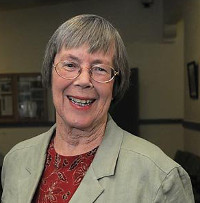Controlling the Temperature
What We All Can Do to Alleviate Climate Change
Earlier this month in Paris, an historic and surprising agreement was reached by 188 countries to steadily and verifiably reduce carbon emissions with a goal to cap global warming to 2 degrees Celsius, or 3.6 degrees Fahrenheit, above pre-industrial levels and to phase out all fossil fuels by 2050. The cost of renewable energy sources such as wind, solar, energy efficiencies, batteries, and even nuclear power is falling to such a point that this is a realistic goal. Renewables will be able to compete with coal and oil economically in the foreseeable future.

These are global goals, but to reach them requires action at the national, state, and local level. In Santa Barbara, city and county governments and groups such as UCSB and the League of Women Voters are exploring the concept of sustainability both in terms of energy and the environment.
One definition of a sustainable community is the capacity to endure. But it is not a passive concept. It covers development that meets the needs of the present without compromising the ability of future generations to meet their own needs. Conceptually there are three pillars to a sustainable community — the environment, society, and economics. Action on any one of these can have major impacts on the other two. The recent gathering in Paris dealt mainly with global warming. The primary focus was on reducing greenhouse gas emissions over the next 25 years, and all three pillars would be affected: maintenance of green space, rain forest, and wet lands; moving to renewable energy sources; a major impact on the urban environment through reduced air pollution, and improved livability for the poor in big cities; and the economy with both loss of some jobs as oil and coal become less prominent and gains of others in the solar, wind, and other renewable resources.
Preservation of environmentally sensitive habitat such as wetlands and habitat for rare and unusual flora and fauna has been part of the developmental review process for many years. More recently, state law has added the requirement of assessing and monitoring greenhouse gas emissions. The main source of greenhouse gases in Santa Barbara County is traffic on the roads. More fuel-efficient cars, including electric cars, public transit — buses and trains, carpools, bicycling, and so on — all have had some effect on emissions though not yet enough to counter the increased number of cars on the road. Associated with traffic, streetlights are a major energy user. Switching to LED lights would lead to significant savings. This is just one piece of unfinished business, with numerous other projects yet to be implemented.
Land use decisions also bear on this issue. Goleta has recently approved a number of higher density residential developments along the Hollister corridor to provide housing close to work sites and public transit in the hope that this will encourage people to leave their cars at home and avoid the morning and evening rush hours. There is a good deal of community concern about these multi-family projects, which differ greatly from the older, single-family suburbs. Time will tell what the impact of these developments will be, but the need for more housing is real. The alternative is either more commuting and traffic on the roads or encroaching on agricultural land for more expansive developments.
Buildings are among the biggest emitters of gree house gases. Goleta has adopted green building standards that include the following goals: increased energy and water efficiency; increased resource conservation; reduced waste from construction projects; durable buildings that are efficient and economical to own, operate, and maintain; and promotion of a healthier environment. Already we see a proliferation of double-pane windows, low flow toilets and showerheads, and low-water-use landscaping as people modify existing housing to make it more efficient. Some new buildings like the Bren Center at UCSB are positioned to take advantage of the sun and ventilation to reduce energy use.
These are some of the steps that can be taken locally by individual residents to help in a small way to combat global warming. The expense of most of them is moderate and do not require a major change in lifestyle. It will take people all over the world taking steps like these and more to reach the goal of phasing out fossils fuels by 2050. New technology, conservation, and careful planning can make it a reality. For our children and grandchildren, let’s do it!



